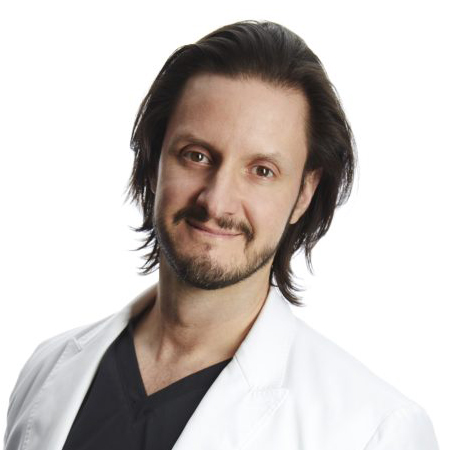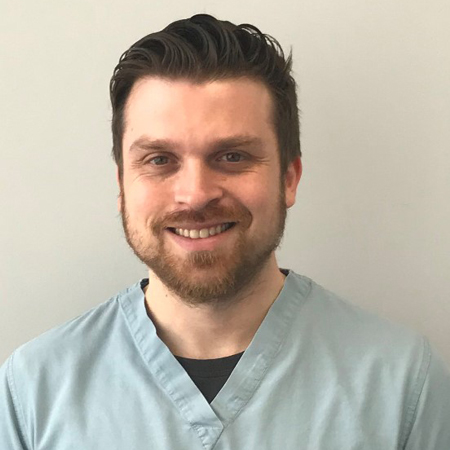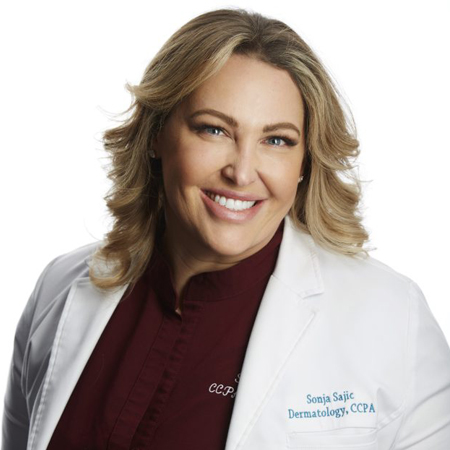While a proper skin care regimen along with hydration, sleep, stress reduction, regular diet and exercise may help to slow down Father Time, we may reach a point where our skin needs more help to remain looking its best longer.
Schedule an appointment online or call (519) 836-8558.
The sun and its ultraviolet rays are estimated to account for close to 90% of our skin aging, wrinkles, laxity, loose skin and pigment changes. Beyond just the appearance, lurking within the skin, these effects photoaging also leave our skin more prone to skin cancer.
As dermatologists, we have many names for this condition including photoaging, photodamage, solar damage, or sun damage. It happens when ultraviolet (UV) light comes into with unprotected skin, causing DNA changes at a cellular level. Because much of photodamage happens in the deeper layers of the skin known as the dermis, it can take years before the damage becomes visible to the naked eye. Special UV and black light cameras can help us see this damage sooner.
Once visible, many of our patients report feeling like these signs of sun damage make their skin look a lot older than that of their peers. This may leave them feeling older they are and in many cases can lead to withdrawal from social activities.
What Are The Signs Of Photoaging?
Unlike normal, chronological aging (also known as intrinsic aging), which is dictated by age and genetics, photoaging happens when ultraviolet light from the sun and/or tanning beds permanently damages the skin’s structure and function. To get a firsthand look at the difference between the two, compare your skin on an area of your body that is not exposed to the sun with the skin on your face and forearms.
Signs of sun damge begin in the teens to early twenties. You may notice premature aging with worsening of the following:
- Wrinkling
- Pigmentation changes such as age spots, liver spots (solar lentigines) and freckles
- Loss of skin tone (decreased elasticity)
- Rough, uneven skin texture
- Broken capillaries (spider veins), usually around the nose and chest
- Redness and blotchiness
Restoring The Cells’ Capacity To Fight Off Damage
Recent and growing body of research is showing that it is not only the look of the skin that we should be concerned about. We now know that aging associated pigmentation changes are driven by loss of cellular function and decreased ability repair further UV damage. With increased UV damage and decreased ability to repair it, our skin becomes much more susceptible to development of precancerous lesions like actinic keratosis as well as skin cancers like basal cell carcinoma and squamous cell carcinoma.
Compared to sun-protected skin, sun damaged skin has a higher incidence of senescence (sleeping cells) and a decreased production of a protective factor known as Insulin Growth Factor 1 (IGF-1). Fortunately, there is a way to reverse this damage.
We Can Fix Your Cells’ DNA Repair Mechanisms
We are now aware that much like our muscles, our skin has potent regenerating mechanisms that can be kickstarted by several treatments. When exercised, our muscles are torn in a controlled way that stimulates not only repair, but bigger and stronger muscles. Your skin is no different. Taking this concept of controlled wounding as a method of not only repairing, but enhancing function, research has shown that the same principles can be applied successfully to your skin.
So how do we exercise our skin to restore its DNA repair mechanisms? There are currently four known ways to do it including:
- Carbon Dioxide (ECo2) Laser
- Erbium: YAG Pixel Laser
- Dermabrasion (not micro-dermabrasion)
- Microneedling (does not fix pigmentation and doesn’t destroy actinic keratosis)
What Is The Best Treatment For Photo Aging? Which One Is Best For Me?
While photodamage cannot be removed and reversed completely, there are a number of treatments that may be recommended to greatly improve the look, form and function of your damaged skin
- Lasers: Fractional resurfacing medical laser treatments are well known for their ability to rejuvenate the skin and minimize brown spots, lines and wrinkles, as well as improve texture and appearance of enlarged pores. Other lasers, such as the pulsed dye laser or Intense Pulsed light (like DyeVL or BBL), can remove broken blood vessels and redness caused by too much sun exposure. Certain medical lasers that we use in our Guelph and Burlington locations can also destroy precanceours cells like actinic keratosis and also increased regererative and DNA repair capacity that was lost (see above).
- Chemical peels: By applying a thin layer of liquid chemical substance such as trichloracetic acid (TCA), lactic acid, salicylic acid or glycolic acid to the skin, we can remove brown spots and actinic keratoses and improve the tone and texture of your photoaged skin.
- Photodynamic therapy (PDT): This treatment helps remove precancerous spots that can result from sun exposure. We can apply a prescription medication like Metvix or Levulan to your skin and then use daylight, blue or red fluorescent light to activate the medication that will then destroy precancerous cells but preserves normal cells. While this treatment may also improve wrinkles and brownspots, it may take 3-8 sessions to do so.
- Topical medications: Certain medications such as a topical retinoids medication (like tretinoin, adapalene or retinol) can be prescribed to even out your skin tone and address roughness and fine lines that result from photoaging. Some patients may find prescription strength medications difficult to tolerate at the start and as such it may be of use to start with less potent over the counter versions. Topically applied Vitamin C and other anti-oxidant creams can also be very helpful in reversing signs of sun damage such as brown spots and textural changes. Some may even make your sunscreen work longer and harder through increasing the time needed to burn.
- Cryotherapy: Liquid nitrogen is sometimes used to freeze isolated age spots or actinic keratoses. After a few days, the spots become dark, crusted or blistered and will eventually shed off.
- Combination Treatments: Numerous studies have shown that combination treatment is the best treatment. This may be done right away or over time if one type of treatment fails to generate the desired results. In addition, one must consider that certain treatments eliminate the damage already present, while other treatments may increase your skin’s ability to repair itself. Ultimately a combination of both mechanisms will lead to optimal outcomes. New options in field-directed therapy with superior efficacy, cosmesis, and convenience with much less downtime, and redness may appeal to patients, but these may not be covered by OHIP or private insurance plans. Ablative and non-ablative lasers may fulfill these advantages and have been investigated as monotherapies as well as combination therapies for treating extensive AKs.
How Can You Prevent Photodamage?
It’s never too late to practice good sun protection and avoidance in order to prevent future sun damage. Whenever possible seek shade and wear protective clothing including hats, sunshirts and sunglasses. We recommend using a broad-spectrum sunscreen, which will shield skin from both UVA and UVB rays. Look for a sun protection factor (SPF) of 30 or higher. Water-resistant formulas are encouraged. Reapply every two hours or sooner if swimming or exercising. Don’t forget to apply to often neglected areas like the lips, nose, and the ears. Topically applied Vitamin C and other antioxidant creams can also be very helpful in reversing signs of sun damage such as brown spots and textural changes. Some may even make your sunscreen work longer and harder through increasing the time needed to burn. Additionally, ongoing research is investigating whether certain molecules can increase your own DNA repair enzymes.
Request An Appointment
If you’re looking for a dermatology practice in Guelph, Burlington, Kitchener, Cambridge, and surrounding areas in Southwestern Ontario, the team at deRMA Skin Institute is ready to help. Request a consultation online or call us at (519) 836-8558 to schedule an appointment with one of our dermatologists.

Dusan Sajic, MD, PhD

Richard Backstein, MD

Sonja Sajic, CCPA
With more than 20 years of experience, deRMA Skin Institute strive to offer patients the most advanced treatments available to keep their skin healthy and looking its best. Board Certified Dermatologist, Dusan Sajic, MD, PhD, board-certified Plastic and Reconstructive Surgeon, Richard Backstein, MD, FRCSC, and Sonja Sajic, CCPA are committed to providing state-of-the-art medical, surgical and cosmetic treatments to all patients in Guelp, Burlington, Cambridge, Kitchener, Hamilton, Milton, and surrounding areas.


